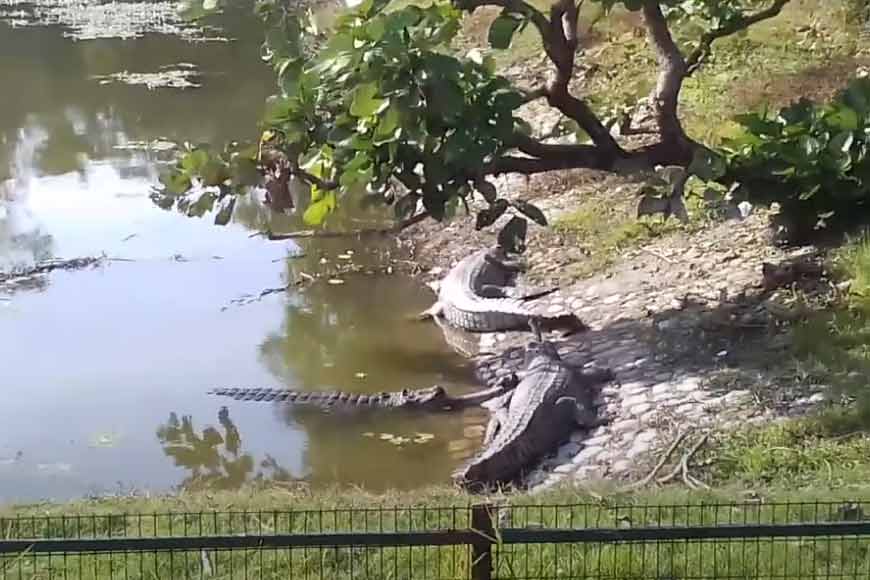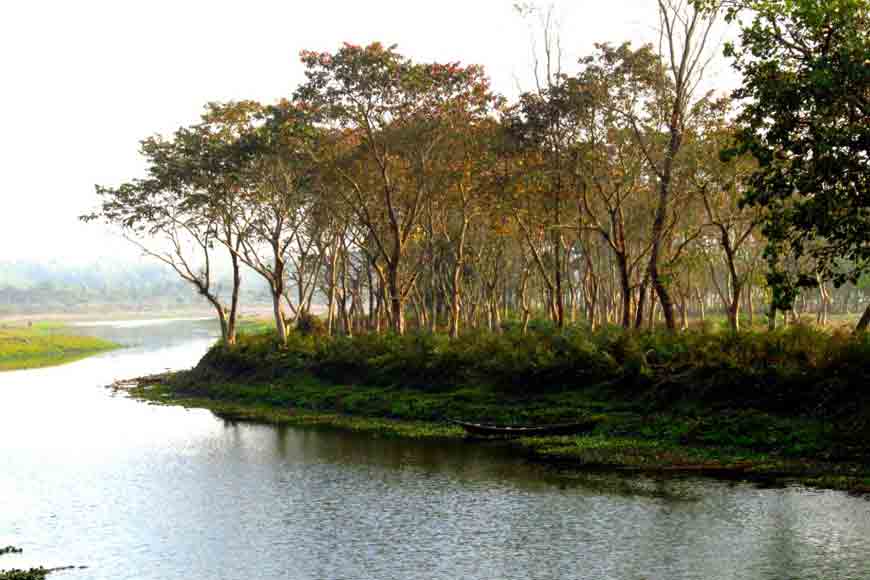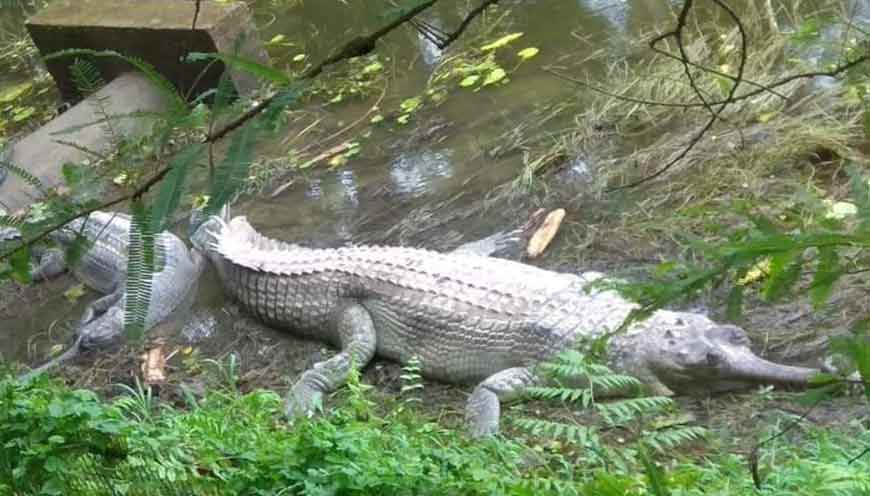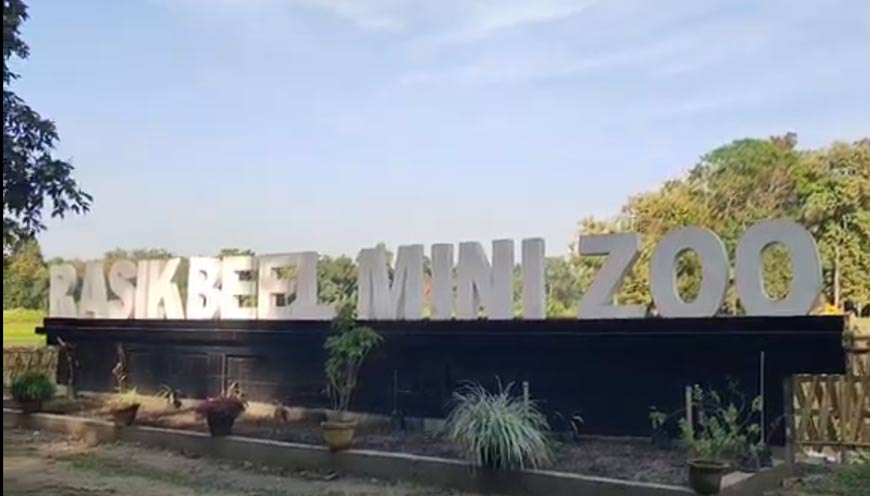Juveline gharials moved to new habitat through first-of-its-kind Green Corridor

Gharial, also known as gavial or fish-eating crocodile
Just imagine a green corridor being made for Gharials! We have heard of green corridors that are generally used to transport organs for transplantation or for accident patients in need of trauma care. But for animal transportation! Well, that’s quite unique to the ears of Bengal people who have recently came across the case of baby gharials being moved to their new habitat.
Spread across 20.17 hectares of land, Rasikbil Nature Tourism Center in Cooch Behar draws tourists and locals in large numbers. Two years ago, the State Forest Department took up the task to breed gharials (fish-eating crocodiles) in an artificial environment at the mini zoo in Rasikbil. The hatchlings were nurtured at a nursery where the temperature and relative humidity are controlled. In these two years, their numbers have increased considerably and the place has become overcrowded. Gharial parents there have given birth to hundreds of hatchlings within a year and a half. Hence, the authorities planned to shift 37 of the juvelines to Jalangi from Cooch Behar and provide them a new home.

Gharial, also known as Gavialis gangeticus, is a critically endangered reptile according to the Red Data Book of the International Union for Conservation of Nature (IUCN) and was declared critically endangered in 2007 by the organization. These large crocodiles were once widespread across the Indian subcontinent and thrived in all the major river systems of the northern Indian subcontinent. But are now restricted to as few as five severely fragmented and depleted populations across India and Nepal. They only live in 2% of their historical range. Currently, there are between 500-700 breeding adults. Gharials are regarded as the ‘vahana’ of the river deity Gaṅgā with mystical and healing powers. They are the longest of all living crocodilians and they have been patrolling these waters since the Cretaceous period over 140 million years ago.
Authorities at Rasikbil Nature Tourism Center thus initiated the plan to release 37 juvenile gharials into the Bhagirathi tributary at Tiktikpara in Jalangi, Murshidabad, 600 km from Cooch Behar. Accordingly, they approached the Superintendent of Police of the concerned district requesting him to provide a green corridor so that there would be no roadblocks to impede the smooth journey of the aquatic reptiles. “Juveline gharials were handed over to Nadia Murshidabad Division at Jalangi and they would be released by micro chipping. Breeding and propagation will be facilitated in the river. A team of doctors, forest workers and forest officials left for Jalangi on February 24 through a Green Corridor created exclusively for them with the first batch of gharials,” said a forest official. “Gharials tend to suffocate in small water tanks in which they were carried, hence they needed to reach their destination as fast as possible.”

Sadly, these unique crocodiles face a multitude of threats to their existence as Professor Dr. Ena Ray Banerjee, Head of the Department of Zoology, Calcutta University, pointed out, “Dams and barrages of rivers are getting blocked significantly and as gharials cannot walk on land like crocodiles, they cannot readily disperse to other waterways. Increased agricultural and grazing pressure is also negatively affecting their nesting and basking habitats. Gharials are impacted by fishing pressure in two ways: the lack of prey due to overfishing and the accidental capture in gill nets of adult and sub-adult gharials. They are also persecuted by local fishermen who hunt them for using in traditional medicine, while local tribes collect their eggs for food.” When addressing the root of the gharial's declining population, one needs to tackle the problem of river pollution, especially the ones where these aquatic animals once abundantly roamed. Conservation of rivers include controlling sand mining and most importantly, regulating developmental activities along riverbanks.

The mini zoo in Rasikbil houses 11 full-grown gharials of which seven are males, rescued from various rivers of North Bengal. Earlier, the female gharials laid quite a number of eggs, but those decomposed before birth of the hatchlings because of inclement weather. Therefore, the officials started exploring options for artificial breeding of hatchlings from eggs. They approached the authorities of Nandankanan Zoological Park in Odisha for the know-how and advice on gharial breeding. Nandankanan Gharial Breeding Center has written its success story, inspiring other centres to follow their example. Their experts were consulted and accordingly, eggs were collected and kept in a conducive temperature, relative humidity and other required conditions for breeding. A nursery was created where eggs are kept at a temperature of about 37 degrees in sand beds surrounded by bamboo fences for fertilization. It is there that the hatchlings saw the light of the day. Generators have been installed for uninterrupted power supply, the nursery is well lit, and temperature is monitored round the clock. However, more than 50 hatchlings are born in the second phase, who will be kept in Cooch Behar nursery for the time being.
The transportation of the juvenile gharials has been one of the trickiest tasks. A number of holes were made in the water supply plastic pipe and each gharial baby was lodged in each pipe which were then tied to bamboo loft and lifted up to the chassis of the lorry. When Dr Ray Banerjee was asked to comment on the mode of transportation, she said, “Gharials are extremely hardy reptiles who have survived for millions of years so they in all possibility will be able to bear the hardship of the journey. However, after they are released in their new environment, they will have to be monitored closely because they are going to emerge from the confines of a protected nursery and will require time to adapt to the natural environment in Jalangi River.”











